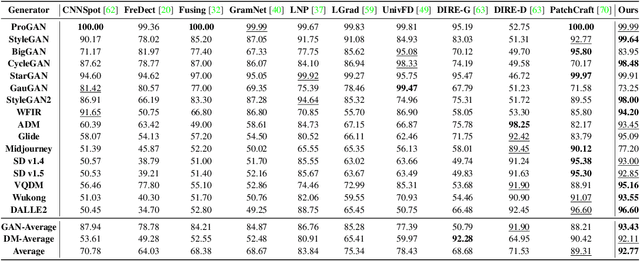A Sanity Check for AI-generated Image Detection
Paper and Code
Jun 27, 2024



With the rapid development of generative models, discerning AI-generated content has evoked increasing attention from both industry and academia. In this paper, we conduct a sanity check on "whether the task of AI-generated image detection has been solved". To start with, we present Chameleon dataset, consisting AIgenerated images that are genuinely challenging for human perception. To quantify the generalization of existing methods, we evaluate 9 off-the-shelf AI-generated image detectors on Chameleon dataset. Upon analysis, almost all models classify AI-generated images as real ones. Later, we propose AIDE (AI-generated Image DEtector with Hybrid Features), which leverages multiple experts to simultaneously extract visual artifacts and noise patterns. Specifically, to capture the high-level semantics, we utilize CLIP to compute the visual embedding. This effectively enables the model to discern AI-generated images based on semantics or contextual information; Secondly, we select the highest frequency patches and the lowest frequency patches in the image, and compute the low-level patchwise features, aiming to detect AI-generated images by low-level artifacts, for example, noise pattern, anti-aliasing, etc. While evaluating on existing benchmarks, for example, AIGCDetectBenchmark and GenImage, AIDE achieves +3.5% and +4.6% improvements to state-of-the-art methods, and on our proposed challenging Chameleon benchmarks, it also achieves the promising results, despite this problem for detecting AI-generated images is far from being solved. The dataset, codes, and pre-train models will be published at https://github.com/shilinyan99/AIDE.
 Add to Chrome
Add to Chrome Add to Firefox
Add to Firefox Add to Edge
Add to Edge